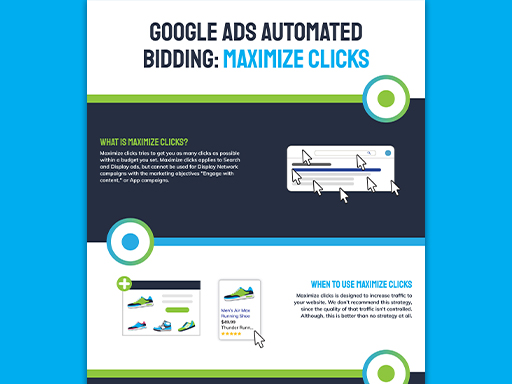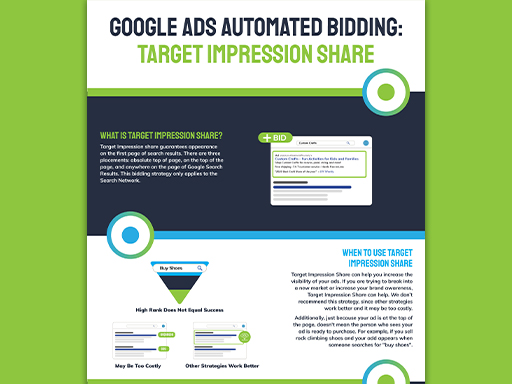Setting your bids on Amazon can be a bit daunting. Should you go with the default bid, or should you figure out the best bid for each of your products individually? How can you make sure you’re driving profit when you bid on Amazon?
In this blog, we’ll walk you through the steps you need to take to ensure your bids are profitable. First, we will look at the targeting options available on Amazon, then we will discuss how to set up a profit-driven bidding strategy. Finally, we will look at other concerns that can impact bidding, such as seasonality.

Tip #1: Adjust Your Bidding Strategy According to Campaign Type
How you bid on Amazon will be effected by which type of campaigns you run: manual or automatic targeting campaigns. In this section, we’ll take a look at what the differences between the two targeting types.
Checkout our infographic for more info on manual vs. automatic targeting campaigns.
Bidding on Manual Targeting Campaigns

One of the biggest differences between manual and automatic campaigns is that you can target keywords and products in manual campaigns. This means you can increase bids for successful keywords and lower bids for those that drive fewer sales.
If you run manual targeting campaigns, frequently evaluate the keywords and products you bid on to determine which are working, and which are simply using up ad spend. Then use negative keywords to remove unsuccessful keywords. This will help you increase profitability by redirecting ad spend to the keywords that drive sales.
When it comes to targeting keywords, you can choose which keywords you want to target at the ad group level. If you have accurate data, this can make your ads more effective. To run successful manual campaigns, you will need to do a significant amount of keyword research and maintenance.
Learn more using product targeting in our blog: Increase Your Conversions Using Product Targeting.
Bidding on Automatic Targeting Campaigns
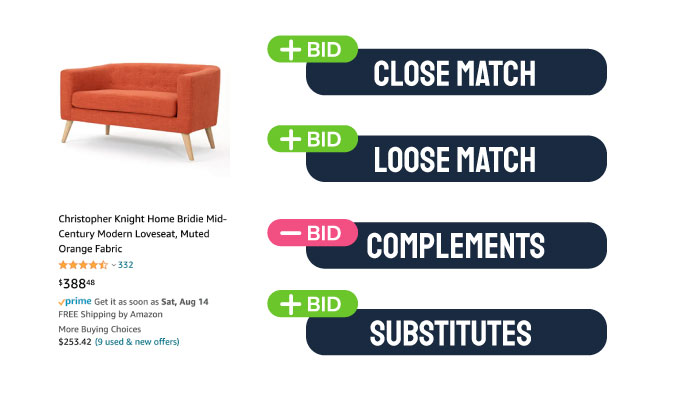
In automatic campaigns, you can’t adjust bids at the keyword level, but you can adjust bids according to targeting type: Close Match, Loose Match, Complements, and Substitutes.
While it’s not as precise as adjusting bids for individual keywords, adjusting bids for targeting types will give you some more control over automatic campaigns.
Find out which targeting types hold the most value for your business! We ran an experiment to try and which targeting types are most valuable. See how we set up the experiment and the results in our white paper: Discovering a New Amazon Campaign Structure.

Tip #2: Use Dynamic Bidding (Down Only) to Preserve Profitability

If you run Sponsored Products, you will have an additional lever for adjusting your bids. There are three strategies you can choose from:
- Dynamic Bidding (Up and Down) will raise and lower your bids up to 100% depending on the likelihood of a conversion.
- Dynamic Bidding (Down Only) will lower your bids up to 100% if a conversion is unlikely.
- Fixed Bidding uses a default bid and any manual adjustments you add. Conversion likelihood is not factored in.
We recommend using Dynamic Bidding (Down Only) because it preserves profit when a conversion is unlikely. Dynamic Bidding (Up and Down) can still work with a profit-driven strategy—you just need to keep an eye on your bids to make sure you’re not spending too much.
This can be a good option if bids vary significantly in your market. We don’t recommend using Fixed Bidding, since Amazon will apply your bid to every placement, regardless of the likelihood of conversion.

Tip #3: Develop a Profit-Driven Bidding Strategy
Now you have an idea of how to bid according to which ads you choose, and which types of campaigns you run, it’s time to set up an overall profit-driven strategy across your campaigns.
Creating a profit-driven strategy for your Amazon campaigns will ensure that you bid the according to how much profit is available for each individual product you sell on Amazon. This, in turn, ensures your bids are always profitable.
The first step is to set profit-driven ACoS targets.
Set Profit-Driven ACoS Targets
We don’t recommend simply setting an ACoS target across all of your campaigns. ACoS is a metric that leaves out many important costs including: commission, shipping, cost of goods sold, and FBA fees. The only cost that ACoS actually accounts for is ad spend.
As an Amazon seller, commission alone can take up a significant amount of your revenue. Check out our blog How to Account for Amazon Commission When Bidding for more details. Without considering these costs, you are sure to spend too much on advertising—possibly more than you can spend to be profitable.
Instead of using ACoS alone to measure the success of your campaigns, we recommend setting profit-driven ACoS targets for your products. This method ensures that each of your segments has a target that makes sense.
Example of Why You Should Set Profit-Driven ACoS Targets
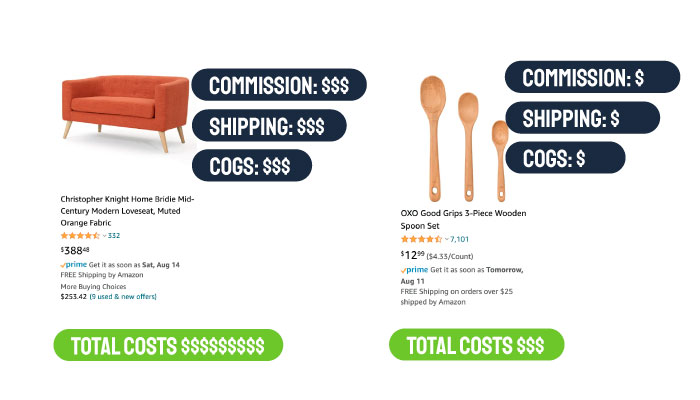
For example, if you sell housewares, including furniture and kitchen utensils—odds are the furniture will have more costs associated with it (i.e. cost of goods sold, higher shipping costs because of weight and size). You wouldn’t want to set the same ACoS target for these two different segments.
In our white paper, Omnitail’s Guide to Profit and ACoS on Amazon, you’ll learn how to calculate an ideal ACoS for each of your products. Figuring out what ACoS target to aim for that will preserve profitability is crucial to figuring out how much you should bid on Amazon!
Track Profit Over Time
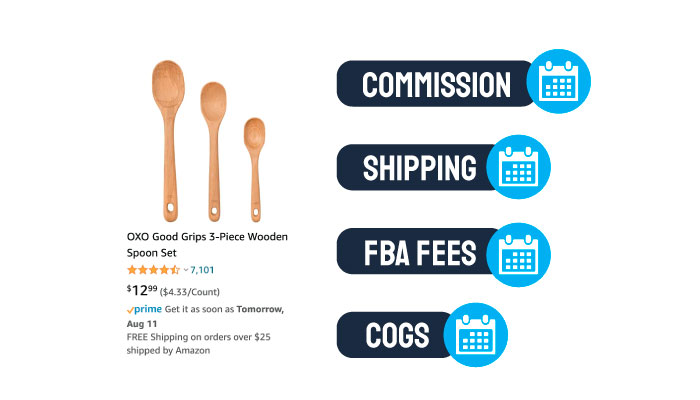
As a part of this strategy, it’s important to keep track of profitability over time. We recommend keeping track of costs at the SKU-level, so you know exactly how much you have to spend for each product you sell on Amazon.
Overtime, your costs may change. You will need to stay on top of your costs to make sure your ad spend remains profitable. Check up on the following costs:
- COGS
- Commission
- FBA Fees
- Shipping Costs
Remember, whether it’s bidding or segmenting your campaigns, it’s important to continue to update your Amazon campaigns regularly.

Tip #4: Adjust Bids According to Seasonality and Other Concerns
Outside your initial strategy, there may be special circumstances that arise that temporarily require a different bidding strategy.
Consider adjusting your strategy for products that are highly seasonal or if your goals change. For example, if you want to maximize revenue instead of profit. Let’s look at how you can adapt your strategy in these situations.
Seasonal Bidding
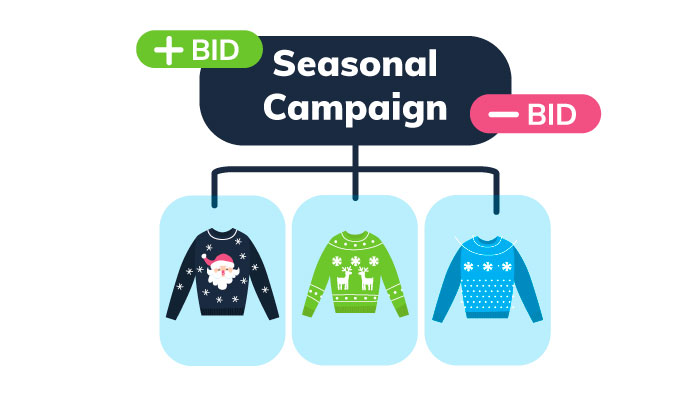
If you have products that perform well during a certain season, increase bids when those products are in season (and decrease bids when they are out of season). Segmenting your seasonal products into their own campaigns can help you quickly adjust bids in a timely manner.
If your seasonal products are grouped in campaigns with non-seasonal products, it will be difficult to make sure your bids are relevant. This is true for products that you sell during Black Friday and Prime Day also. These big sales come with increased competition, so prepare to increase your bids to remain competitive.
When You Want to Maximize Revenue...
Sometimes you may want to maximize revenue even at the expense of being more profitable. If this is the case, be willing to tolerate a smaller margin to maximize your revenue numbers. This is an instance in which you might want to adjust your bidding strategy as well. It can still “profit-driven”, just with some flexibility to meet your circumstances and goals.

You're Ready to Bid on Amazon!
To bid profitably on Amazon, pay attention to which type of campaigns you’re running and use the levers available to you in each campaign type to adjust your bids.
From there, create a profit-driven strategy across your entire account. This includes setting profit-driven ACoS targets, staying up to date with your costs, and keeping up with common concerns like seasonality and changing goals.
If you start implementing these changes in your Amazon account today, you’ll start to grow incremental profit for you Amazon business over time!
Need help setting up a profit-driven Amazon strategy?
Reach out to speak with an expert analyst and discuss your Amazon goals today. We will give you a free analysis of your Amazon campaigns to see where you have room to grow.





